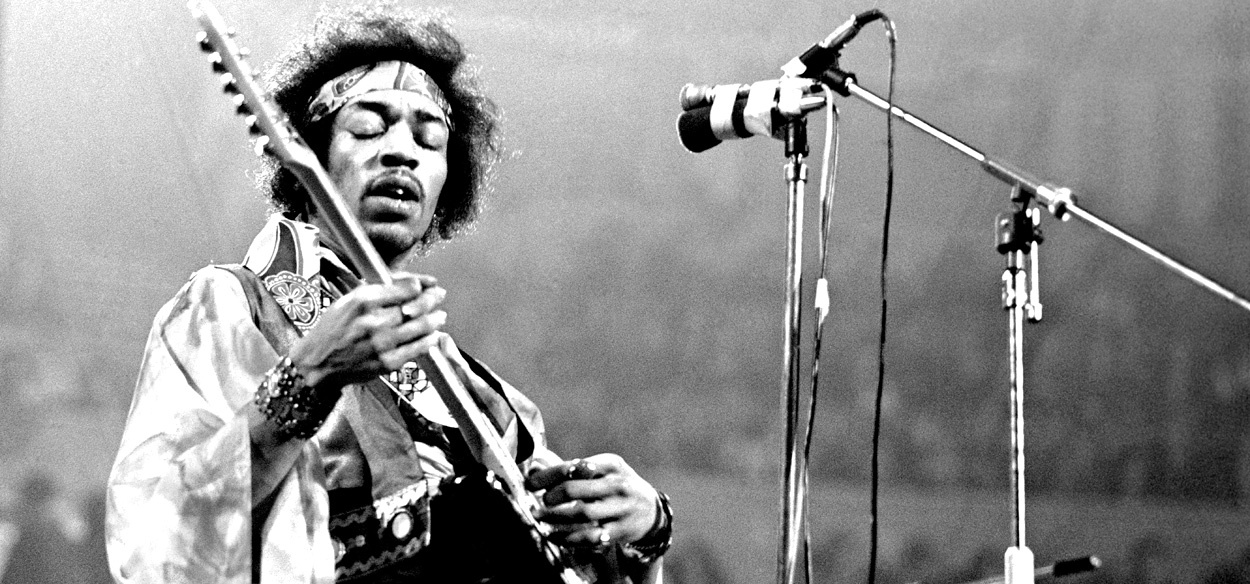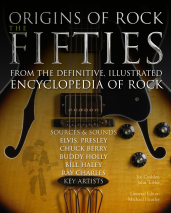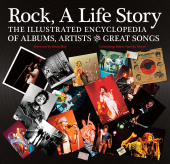 The Jimi Hendrix biopic All Is By My Side is released this month. Starring André Benjamin (more famously known as André 300) as the legendary guitarist, the movie will focus on Hendrix's years in London and how they helped shape his career.
The Jimi Hendrix biopic All Is By My Side is released this month. Starring André Benjamin (more famously known as André 300) as the legendary guitarist, the movie will focus on Hendrix's years in London and how they helped shape his career.
We're excited to see how Hendrix is rendered on the big screen. He is one of the all time great guitar legends, and here at Flame Tree we have poured our appreciation for his music into a handful of our books over the years.
In anticipation of the movie's release, let's take a look at three of Hendrix's most iconic riffs.
Purple Haze
In March 1967 Jimi Hendrix had everything to prove. He’d landed smack in the middle of London’s burgeoning psychedelic rock scene only six months previously and, while contemporaries such as Pete Townshend and Eric Clapton were awe-struck by his amazing abilities as a guitarist, the wider world had yet to hear many of his songs.
His second single, Purple Haze set the rock scene on fire, thanks to its perceived drug references (very much the order of the day in ’67) and Hendrix’s marvellous guitar manipulation.
Central to the all-round amazingness of Purple Haze is an E7#9 chord, made so famous by Hendrix that pundits even refer to it as ‘the Hendrix chord’ to this day. Play it with open bottom E string, A string 7th fret, D string 6th fret, G string 7th fret, B string 8th fret and muted top E and you’ll see why Paul McCartney, who had used the chord on Taxman and other Beatles songs, referred to it as ‘a great ham-fisted jazz chord’.
However, Paul would have been more accurate if he’d labelled it a blues chord, containing as it does a nice, stressed-out clutch of mutually dissonant notes from the blues scale. It’s this dissonance that gives the chord, and the all-time classic riff of which it is a part, its falling-apart, funky quality, and in turn this feeling gives Purple Haze a genuine sense of danger. No wonder crowds and critics loved the song on its release, and that’s before we even get to the solo, a thing of wonder played with the assistance of an octave pedal called the Octavia, built by British engineer Roger Mayer.
Foxy Lady
1967 was also the year in which The Jimi Hendrix Experience first stamped their mark on the international music scene, winding up the year with the excellent Foxy Lady (spelled Foxey Lady on American versions of the record). The heavy-but-smooth riff at the core of the song was a root-plus-octave alternation, after which Hendrix overlaid upper-register fills and, like so much of his 1967–68 material, the song was upbeat and danceable while exuding the unmistakable patchouli scent of the Summer Of Love.
Both in the studio and on stage, Hendrix played the main riff with help from his fretting-hand thumb, which he used to hold down the F# while switching between the root and its octave. Although live versions of Foxy Lady are the ones to go for if you want to hear Hendrix extend it into a full-blown jam and play to the limit of his considerable abilities, the studio version helmed by Chas Chandler is still an anarchic affair by 1967 standards. Listen out for the sharp-edged riffs and feedback which Hendrix barely controls. On the live stage, of course, he would let the feedback ring out and shape it to assist with the solos. Once again, he used the ‘Hendrix chord’ that had first been heard in Purple Haze, released earlier that year. Mashed up with his big hands and overdriven through his Marshall amplifiers, the chord sounded not so much bluesy as threatening. Whoever the object of Hendrix’s affection was in this song, she was in for quite a ride.
Voodoo Child (Slight Return)
The wah-wah pedal was a relatively new invention in 1970, when Jimi Hendrix used it to devastating effect on the unforgettable introduction of Voodoo Child (Slight Return), not to be confused with Voodoo Chile, a much longer and more free-form blues workout played alongside the great Steve Winwood.
The introduction is obviously the piece of guitar music which most rock fans know best, but in the case of Voodoo Child (Slight Return) it’s impossible to single out any part of the song – because Hendrix treats the entire composition as a vehicle for expression. He alternates between rhythm and lead playing in the blink of an eye, and both riffs and solos frequently pan from left to right to add to the swaying, hypnotic nature of the performance.
His guitar parts are backed up by the solid, unwavering playing of bassist Noel Redding and drummer Mitch Mitchell, who allow him the breathing space he needs to take the dynamics down and up, via a slippery funk section that maximizes picking economy, to the fully expressive, dive-bombing pentatonics for which the song is justly famous.
This article is based on text used in our book 'Ultimate Rock Riffs' (ISBN: 9780857753953). Buy it on Amazon here.
Links:
-
Learn more about the movie here.
-
Read about 'The Summer of Love' here.
-
Check out this article about how Hendrix inspired Muse's Matt Bellamy.






